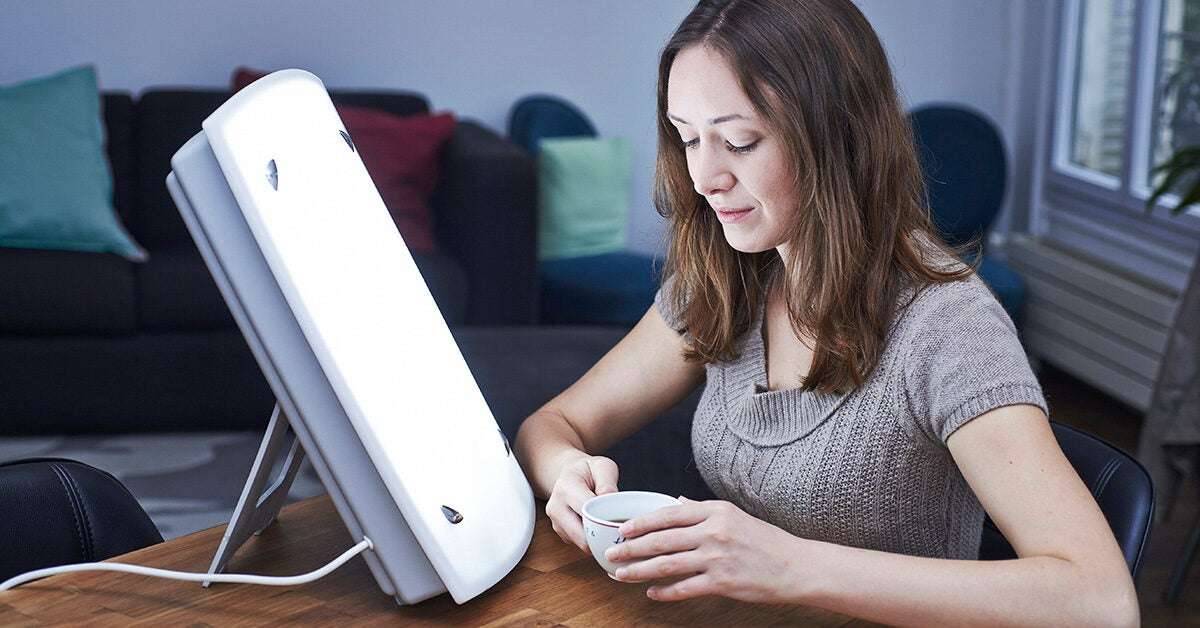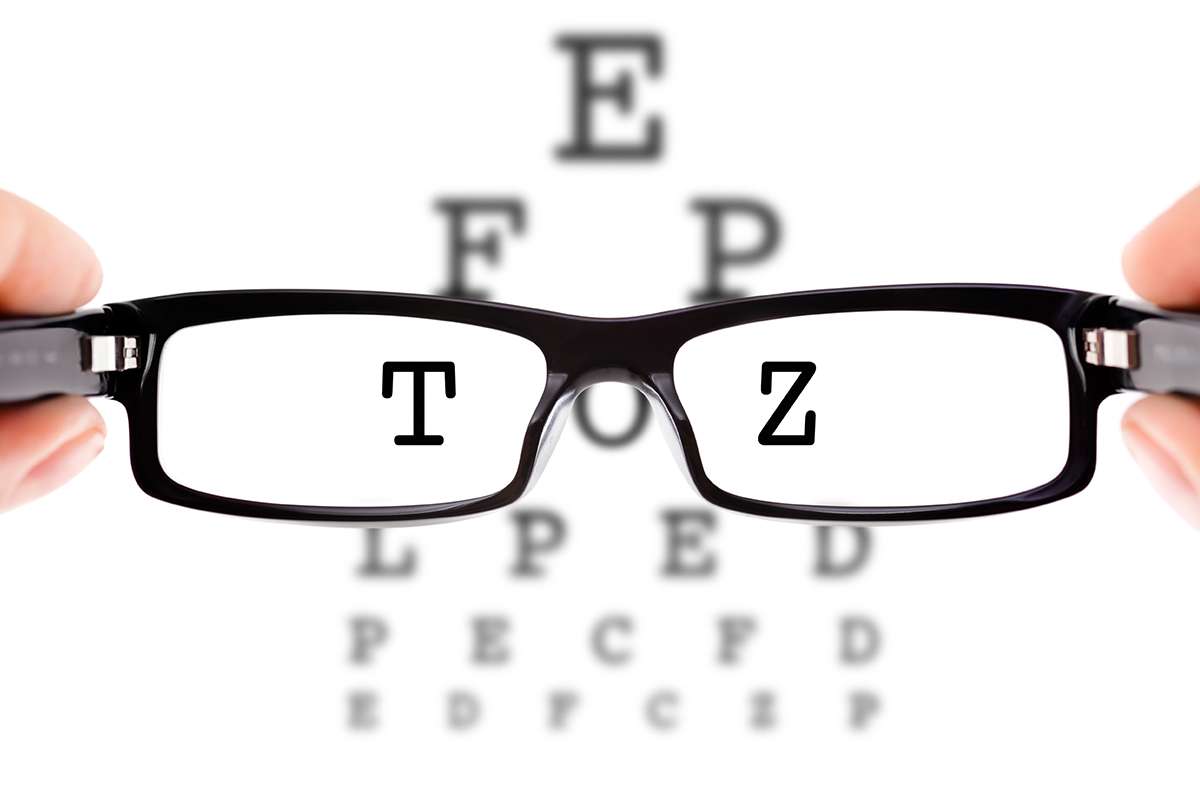What is light therapy?
Light therapy, also known as phototherapy, is a treatment involving exposure to an artificial light source.
The therapy primarily treats major depressive disorder (MDD) with seasonal patterns (formerly known as seasonal affective disorder, or SAD).
This is a type of depression that occurs during a certain time of year, usually in the wintertime when there’s less daylight. Light can also be used to treat other conditions, including sleep disorders and other types of depression.
How light therapy works to treat depression
The research on light therapy gives a few reasons why it may improve the symptoms of depression. Reasons include that it:
- works on your biological clock by aligning your brain’s 24-hour cycle (aka circadian rhythm)
- balances the activation of serotonin circuitry in your brain, which is a key component in mood regulation
- contributes to stable and consistent sleep patterns
- increases alertness
The extent to which light therapy works for you depends on the light wavelength, duration of use, and your personal circadian rhythm patterns.
Circadian rhythms are cycles of important body functions that happen over a 24-hour cycle and can affect hormones, sleep schedules, and eating habits.
How it works
Light therapy compensates for the lack of exposure to sunlight that may contribute to major depressive disorder with seasonal patterns.
During a session, you sit near a light box or lamp, which emits bright light. The box or lamp usually mimics natural sunlight, but there can be variations between devices made by different manufacturers.
The standard output of a light therapy box is in the range of 2,500–10,000 lux. A lux is a measure of light brightness.
Treatments usually begin in the fall and continue until early spring. The length of the session depends on how well you handle the treatment and the strength of the light box.
Guidelines for typical bright light therapy will usually suggest starting with 10,000 lux for 30 minutes every morning, but someone new to the method may require shorter initial treatments. The more powerful the light box, the shorter the treatment session may be.
Side effects
Some people shouldn’t use light therapy, especially those who:
- have medical conditions that make eyes sensitive to light
- take medications, like some antibiotics or antipsychotics, that increase light sensitivity
If you’re considering this therapy, you should consult a doctor if you have any of the following conditions:
- sensitive skin
- eye conditions
- a history of skin cancer
Some people may also experience euphoria or irritability, which is a sign to stop using the device and speak with a doctor.
For those who can use light therapy, there are still potential side effects. Usually, these can be dealt with by adjusting the duration, intensity, or timing of the sessions.
Side effects may include:
- headaches
- eyestrain
- agitation
- irritability
- problems with sleeping
- fatigue
- blurry vision
You can discuss these side effects with a doctor, but you may also find relief through some simple changes. Avoid using the lamp before bedtime to prevent insomnia, and place the light box further away from you to prevent eyestrain and headaches.
Pros of light therapy
In addition to the possible benefits for improving depression symptoms, light therapy is generally easy to start and adjust according to how it makes you feel.
Light therapy is:
- Accessible. The treatment can be done at home using rented or purchased light boxes.
- Noninvasive. It provides an alternative or add-on to medical interventions like medications, but is not taken internally.
- Safe. Although there are some possible side effects, especially when the lamp is used incorrectly, light therapy is generally safe and low-risk.
- Convenient. You can use a light therapy lamp at home, while you read or eat breakfast. You can also stop light therapy for a few days without adverse effects or the return of symptoms.
- Associated with few or mild side effects. Most of light therapy’s side effects, like headaches, dizziness, or nausea, are preventable by adjusting how you use the lamp.
Light therapy also has potential uses beyond MDD with seasonal patterns, but it’s always important to discuss starting any new therapy with your doctor.
Cons of light therapy
The negative aspects of light therapy are the side effects and complications that can occur. These include:
- headache
- insomnia
- fatigue
- eyestrain
- euphoria
- irritability
Insurance may not cover the cost of a light therapy lamp, even if your doctor prescribes it. This expense can be a barrier for some people.
Achieving results with a light therapy lamp takes time — at least a few days. Getting a benefit from the lamp requires consistent use at the same time every day.
What the research says
Light therapy may be used as a stand-alone or add-on treatment.
While most research has focused on light therapy for treating MDD with seasonal patterns, academic research has started to look into using light therapy for other conditions, including other mood disorders and sleep disorders.
Dr. Carl Vincent, a psychologist in Moline, Illinois, suggests that light therapy be used with other treatments, such as psychotherapy or a drug regimen.
“The idea is that it could be used as a supplemental therapy,” Vincent says. “In addition to treatment, people suffering from depression in the winter months should try to be more active. Winter is a time when people tend to be more sedentary, and getting more exercise can help improve mood.”
A 2016 study involving 122 participants with MDD found light therapy — either alone or in combination with the antidepressant medication fluoxetine (Prozac) — was effective for improving depression symptoms.
A 2017 trial of people with bipolar I or II disorder found light therapy improved depression remission rates and lowered depression rates over a 6-week trial period. The light therapy was an adjunct to bipolar disorder treatment, and the researchers did not observe any changes in mood polarity.
How to do light therapy at home
Before you start light therapy, it’s a good idea to talk with a doctor or mental health professional. Light therapy may interact with other treatments you’re currently taking, such as medications.
Once you’ve had a doctor’s sign off, you can start by reading the instructions provided by the light box manufacturer.
A light with lower intensity may require longer exposure time — meaning you’ll have to sit in front of the box longer. The instructions can also help you identify specific risks and hazards for the brand of the light.
To use a light therapy lamp with 10,000 lux intensity, follow these steps:
- Place the lamp on a counter, desk, or other surface.
- Sit or stand at the correct distance from the lamp according to the manufacturer’s instructions.
- Keep your eyes open and do not sleep during light therapy sessions.
- Do not stare directly at the light box or lamp.
- Start with 30 minutes of exposure per day.
- Schedule light therapy sessions as soon as possible after waking up, between 6:00 a.m. and 9:00 a.m.
You can adjust this schedule and the duration of sessions according to how you feel. You can also try passing the time in front of the light box with an activity like reading a book or working, as long as you’re still facing the light.
How long does it take for light therapy to work for depression?
Many people experience some benefits from light therapy within a few days.
Symptoms of depression should improve in about 2 weeks. If they do not, you can increase your time in front of a 10,000 lux lamp to 60 minutes per day. If this does not work, you can reach out to a doctor for advice.
If you find that light therapy works for you, you may want to make changes to the routine. For example, you can reduce the time in front of the lamp to 15 minutes, or schedule it at a different time of day.
You can also take a break from light therapy for a day or two. However, most people with MDD with seasonal patterns continue to use light therapy regularly over the winter (or days when there’s less sunlight available) to prevent symptoms from returning.
The takeaway
Light therapy may be used to treat major depressive disorder with seasonal patterns, sleep disorders, and other types of depression.
It’s often effective, possibly due to the effects on your circadian rhythm and levels of serotonin in the brain.
Light therapy may have several side effects, but most of these are mild and can be prevented. Talk with a doctor if you feel light therapy might be a good treatment option for you.
Is light therapy for depression an effective treatment? Light therapy has been proven to be a treatment option for seasonal affective disorder (SAD), one type of depression. But how does light therapy work for SAD, and can light therapy for depression that is not seasonal be effective also?
What Is Light Therapy?
Although the name might make you think so, light therapy is not as simple as just turning on all the lights inside your home or office.
What light therapy actually refers to is being exposed to a specific kind of bright light (that mimics natural outdoor light) for 20 to 30 minutes each day. For SAD, the typical recommendation is to use a 10,000-lux light box at a distance of about 16 to 24 inches from your face. It’s recommended that you don’t look directly into the light, but that you keep your eyes open. Many people use the time to read, work, or drink their morning coffee. Light therapy is most effective within the first two hours of waking.
Most people with SAD begin treatment with light therapy in the early fall, when it typically becomes darker in many regions of the country. Treatment usually continues until spring, when outdoor light alone is sufficient.
Light therapy is one of the most common methods of treating SAD because it is an effective, noninvasive procedure that doesn’t generally produce adverse side effects. If side effects occur, they’re usually mild and short lasting. They may include:
- Eyestrain
- Headache
- Nausea
- Irritability or agitation
- Mania, euphoria, hyperactivity or agitation associated with bipolar disorder
When side effects do occur and persist beyond a few days, you may be able to manage side effects by reducing treatment time, moving farther from your light box, taking breaks during long sessions or changing the time of day you use light therapy. Talk to your doctor for advice if side effects are a problem.
How Does Light Therapy Help with Seasonal Depression?
People who experience seasonal affective disorder often have too much melatonin in their bodies during the winter months. Since melatonin is the hormone that regulates our sleeping and waking habits, too much melatonin can make it harder to sleep at night and make us feel groggy during the day.
Light therapy helps with the regulation of melatonin by stimulating our retinas. Our retinas are connected to the hypothalamus, which is the part of the brain responsible for regulating our melatonin. This is important for people with SAD because they often have too much melatonin in their systems, as melatonin regulation functions best with adequate amounts of both light and dark. By using light therapy daily, particularly within the first two hours of waking up, people with SAD get their natural melatonin systems off to the right start.
Light therapy can also help people with SAD by reducing the amounts of a transporter protein called SERT. Transporter proteins are responsible for helping neurotransmitters, which are the chemicals that help your brain function and interact with different parts of your body.
One type of neurotransmitter is serotonin, which is a chemical that has been linked to all types of depression. It is easier to have stable moods and a sense of well-being when you have the correct levels of serotonin.
Serotonin moves through your body with the help of a transmitter protein called SERT. SERT is responsible for returning serotonin to dormant nerve cells. Therefore, when there is more SERT in your body, that means that less serotonin is traveling through your body.
Studies have found that people with SAD tend to have higher levels of SERT during the winter months than they do during summer and higher levels of SERT than most people do on the whole. For people who have SAD, light therapy helps their bodies have the right amount of SERT, resulting in mood improvement.
Does Light Therapy For Depression That Isn’t Seasonal Work?
Should light therapy be considered an effective treatment option for all types of depression? This is a more difficult question to answer. Some studies say it is a good treatment option, and some studies say there is no proven benefit. Part of the reason that opinions differ so greatly is that it is impossible to conduct a study with a placebo, given that patients will be able to literally see whether or not there is a bright light in front of them.
Since the results have been so mixed, light therapy should not at this time be definitively considered an effective option for treating depression that is not seasonal.
With that said, since side effects are rare and it is easy to buy a light therapy lamp between $50-300, light therapy can be considered a component of a comprehensive treatment plan for depression. If you would like to use light therapy as a part of your treatment plan, make sure to choose a light with 10,000 lux. Make sure as well that the light is fluorescent without any ultraviolet wavelengths. This could mean that you purchase either a full spectrum light with UV rays filtered out, or a broad spectrum light that naturally does not emit UV rays.
Can TMS For Depression Work?
In summary, Light therapy probably won’t cure SAD or other types depression. But it may ease symptoms, increase your energy levels, and help you feel better about yourself and life.
Like light therapy, TMS is a noninvasive procedure used to treat depression. However, unlike light therapy, TMS is considered a much more powerfully effective treatment in reducing all symptoms of depression and is an excellent option for all types of depression. Contact us today and we’ll help you decide if TMS is right for you.



